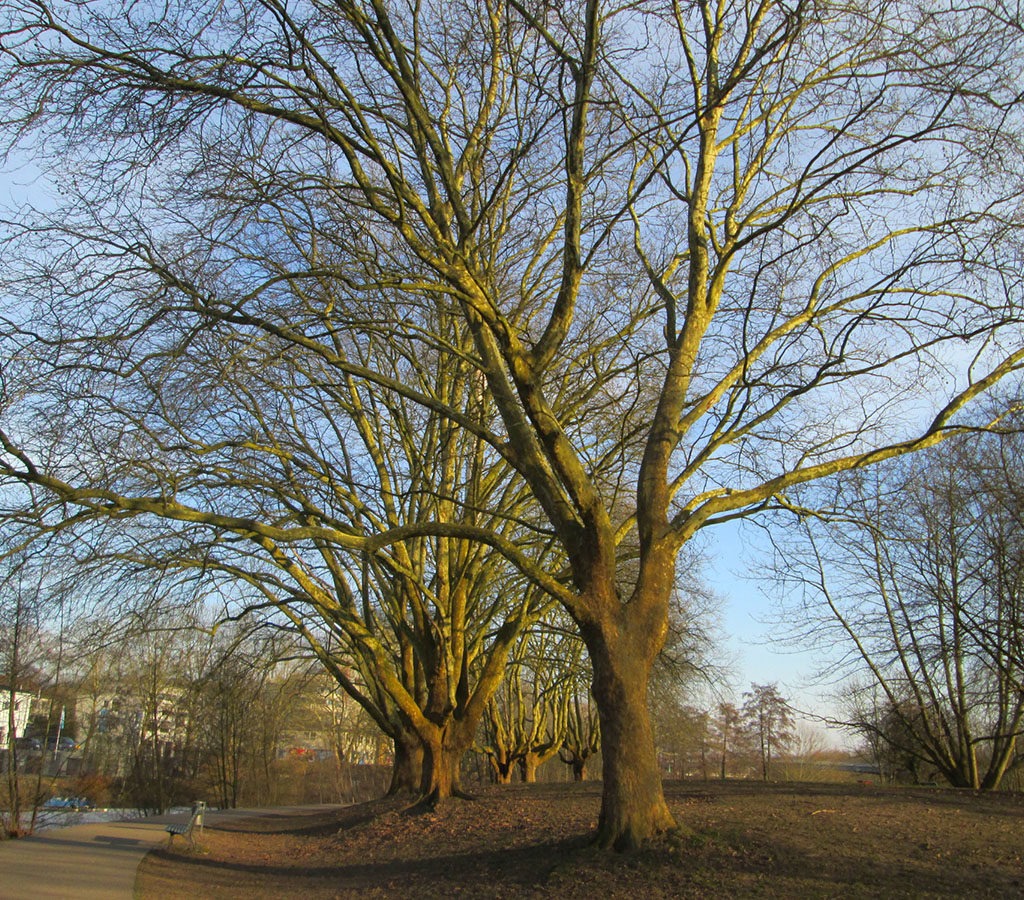12th may 2020
It has been an exciting and close tournament to decide the best urban tree. Finally, Platanus x Hispanica aka London Plane has won the #UrbanTreesWorldCup. Many teams (I mean trees) fell unexpectedly and others have stood out on the way to be honoured as the best urban tree. Finally, the London team imposed to Metasequoia Glyptostroboides aka Dawn Redwood by a comfortable 62-38. The winner will get the honour of standing for decades at the ground of the organisers.
London Plane has won the #UrbanTreesWorldCup organised by Arboricultural Association
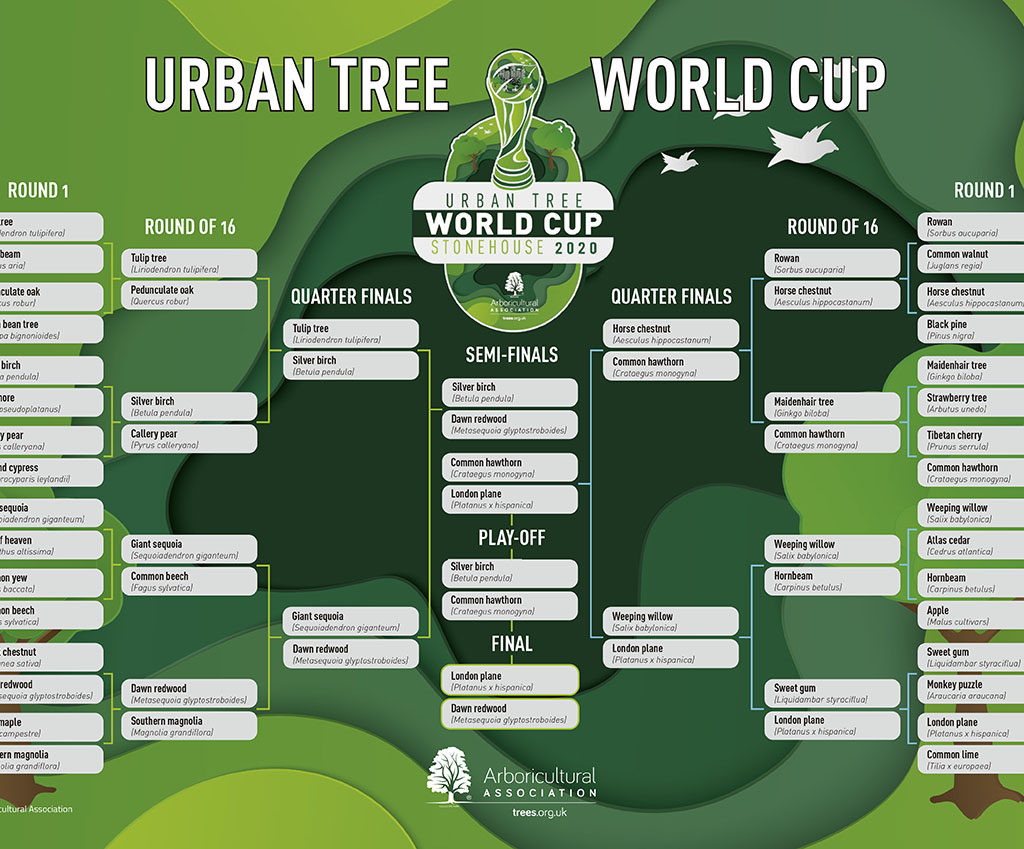
With many sports competitions cancelled, John Parker Technical Director at Arboricultural Association organised an alternative. He followed the football world cup system. 32 teams (Trees in this case) face each other in a single match to pass until only one stand. Each match has been played in Twitter Arena and the Arboricultural Association Website Stadium where the users vote its favourite. After the sum of the votes, the tree with more followers classified.
It has been a clash of titans with hundreds of followers on each side. Eventually, London Plane was the world urban tree champion
John Parker: “Urban trees are incredibly important, bringing a wide range of environmental, social and economic benefits to society. They increase in value and efficiency with every day that passes after planting”.
London Plane was one of the favourite players from the beginning. No without reason he wore the name of England capital on his shirt, although, it’s a hybrid tree. It’s resilient to draughts, shades and floods. And he plats very well in hard urban surfaces. Is for that, that many followers call it THE urban tree.
After a tight result in Round 1 versus Common Lime (55-45), London has won all matches comfortably. During the competition has been a lot of debate. 16277 votes, with solid opinions and good humour, have decided which tree would do better performance in the cities. For some people was clear, although others face a great decision.
First time during the #UrbanTreeWorldCup I’ve not known which way to vote.
Hawthorn: my all time favourite tree, it does EVERYTHING you need from a smaller tree.
Plane: the tree that’s given me my career, iconic landscape tree and the ultimate urban tree??
Should be the final. https://t.co/NWcdEy4PK8
— Greg Packman (@GregPackman) May 9, 2020
Look – dawn redwood is a better tree, period. But London plane is simply the best urban tree. Maybe it’s lockdown, maybe it’s that I hit my head on a shelf this morning – but this is the most important decision that’s being made rn.
— tom simmons (@treeshepherding) May 11, 2020
BENEFITS OF URBAN TREES FOR THE CITY
Urban trees and woodland are areas of green cover in towns and cities. It gathers a range from street trees to trees in gardens, hedgerows and woods.
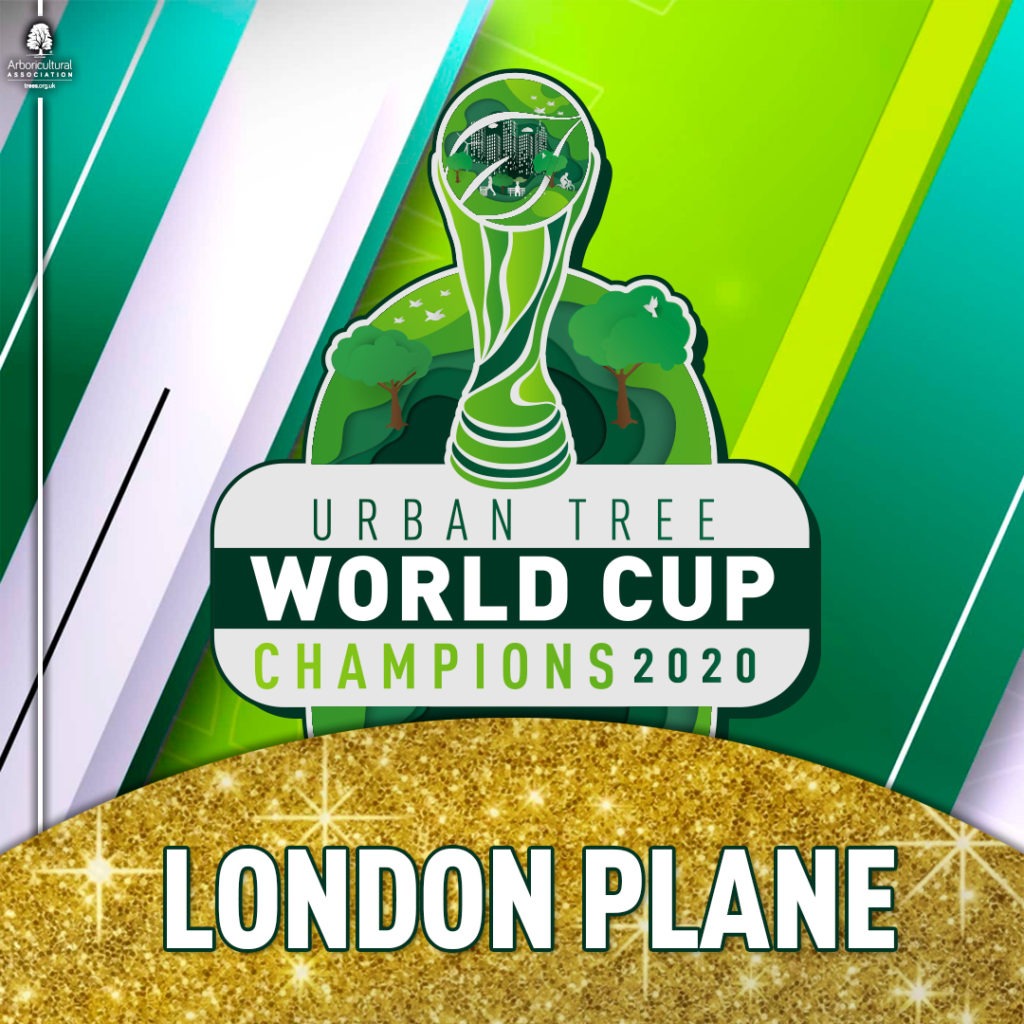
Firstly, they clean the atmosphere. Those days, the air quality has improved a lot in the cities. The trees were doing that job before; they store greenhouse gases, such as Carbon or Methane. According to a study by the Public Health England, “Air pollution is the biggest environmental threat to health in the UK, with between 28,000 and 36,000 deaths a year attributed to long-term exposure”.
Secondly, they made the cities resilient against extreme weather conditions. They help to drain water from the floods and help to regulate temperatures. They are a natural sponge to literally absorb the rainfall.
Emi Murphy, a trees campaigner at Friends of the Earth, said: “There is a serious risk of the temperatures. What we currently define as extreme becoming the new norm. This goes beyond what you could call a nice summer’s day”.
“It also (protect against) the heavy rainfall and floods which are a constant threat to many communities”.
THOUSAND OF TREES PROMISED
In the lasts years many organisations, public and private, have promised to plant millions of trees. The Labour party pledged to plant 120 million trees. The conservative talked about 30 million trees and Lib Dems 60 million.
But Parker said that although is great that trees climb up in the agenda, it is too focused just in planting. There is a lot to look at. Parker mention for example, where the trees came from, where is the place for planting and who is going to look after the trees.
“There is no point in planting millions of trees if they will not be properly looked after. Tree professionals working in every area of arboriculture are critical to healthy urban forests”.
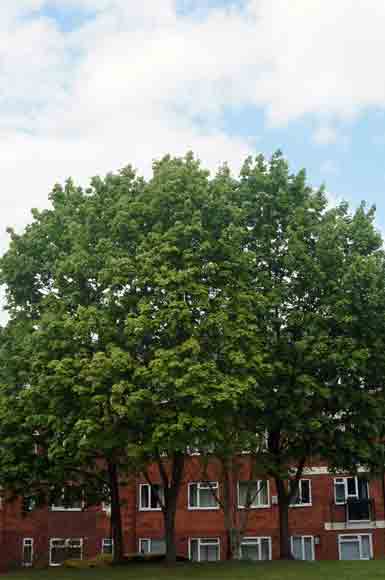
Also, parker warns to look figures carefully. “For example, removing a 100-year-old mature plane tree, 20m tall and 15m wide, and replacing it with two cherry saplings means that the number of trees has doubled but the canopy cover has reduced drastically”, he said.
From an FoI request, Woodland Trust state on its urban trees podcast that councils in the UK are cutting 58 trees per day. Joe Coles said that the figures might be “quite confusing”.
“We believe it is partly due to cuts back and capacity reductions that councils are facing across the UK. So, they make decisions prioritising their budgets and capacities”, he said. Also, he added that councils consider many factors such as risks for the citizens, how the city would grow and its utilities. “They will make decisions based on risks, not necessarily in ecological benefits”, he concluded.
WILL BLACK POPLAR PLAY FOR MANCHESTER IN THE NEXT EDITION?
Black Poplar is an elegant tree which can reach 30m high and live up to 200 years. It is originally from Europe, and once upon the time they were popular in England. Sadly, nowadays they are rare and they are not close enough for pollinating.
With the industrial revolution in Manchester, many trees died due to building boom and pollution in the air. Black Poplar, however, proved its strength and became a tree that championed the industrial landscape. During the Great Depression in the ‘30s, Manchester council tried to alleviate the unemployment hiring people to plant this Mancunian tree. Unfortunately, many died in 2000 under a virulent disease.
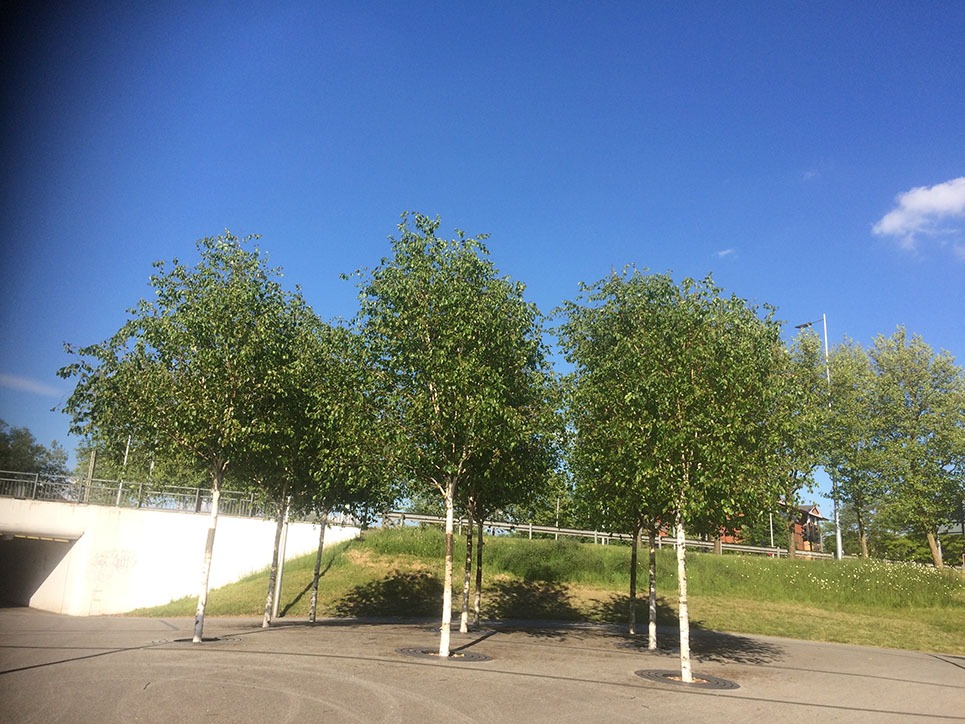
Now, City of Trees has planned to plant almost 100 of these characteristic species. Andy Long, Woodlands Officer, said: “With its roots firmly in Manchester’s history at the heart of the industrial revolution, these trees need to be celebrated and their heritage revealed. We’re thrilled to be bringing them back to Greater Manchester.”
Hopefully, this tough Mancunian tree will stand again in the cotton-city, and it will represent Manchester in the next edition of the #UrbanTreeWorldCup, 2021.

